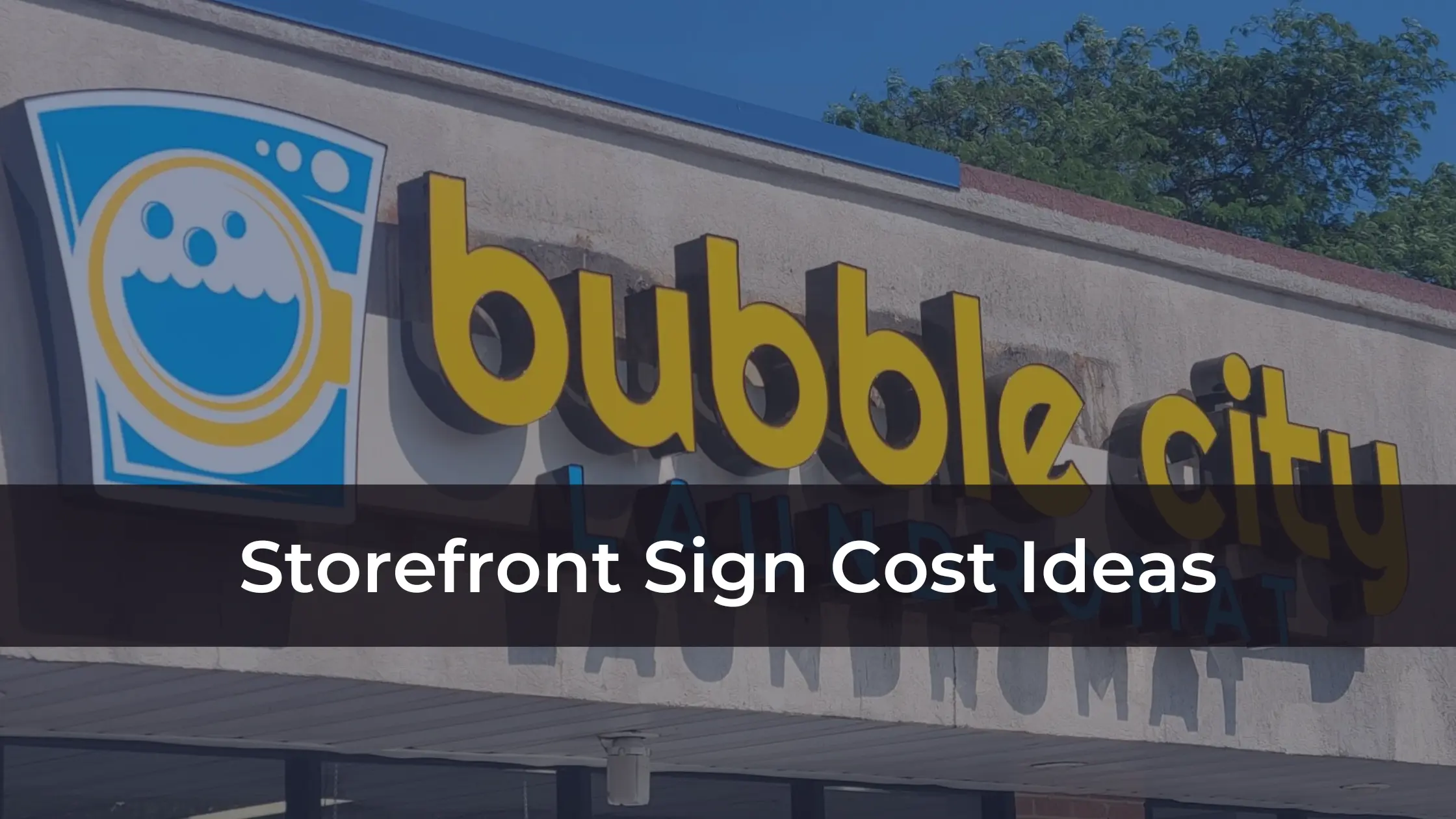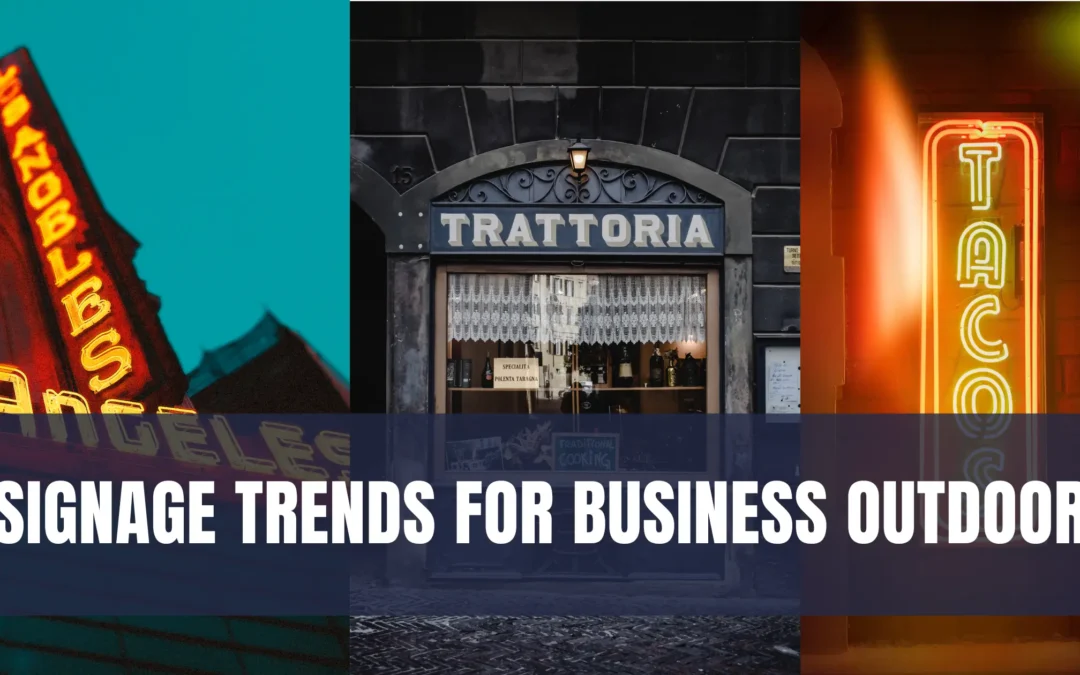Have you ever walked down a bustling street and found yourself drawn to a particular storefront by its eye-catching sign? The art of storefront signage is more than just aesthetics – it’s a strategic investment that can make or break a business. But how much does it all add up to?
In this article, we delve into the world of storefront sign cost ideas, uncovering the secrets behind those captivating displays that lure us in. From neon lights to digital signs, the price tag on these essential marketing tools may surprise you. Let’s explore together and unravel the mystery behind how much it truly costs to make your storefront shine like a beacon in the night.
Different Types of Storefront Signs and Their Price Ranges
There are various types of storefront signs, each with its own set of price points. It’s essential to understand the differences to make an informed decision about which type is right for my business.
1. Channel Letters
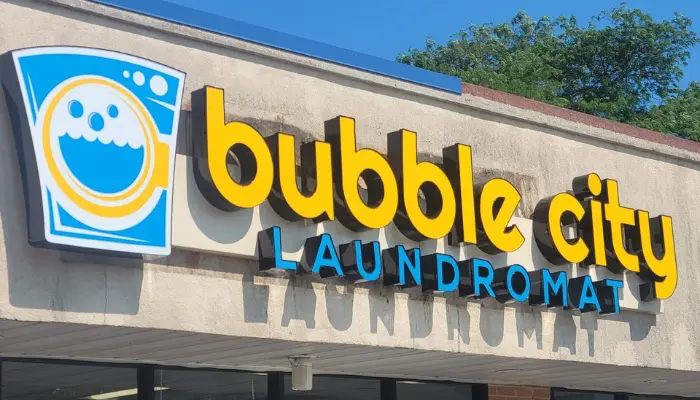
Channel letters are customized metal or plastic letters commonly used in storefront signage. They offer a three-dimensional look and can be illuminated or non-illuminated.
Here’s a breakdown of the factors that typically influence the cost and an estimated range for such signage:
Factors Influencing Cost:
- Material Quality: Higher quality materials cost more but last longer.
- Letter Size: Larger letters require more materials and labor.
- Font Complexity: Custom or intricate fonts may increase the price.
- LED Lighting: If the letters are backlit or lit from within, the cost will go up.
- Color and Finishes: Specialty colors and finishes can add to the cost.
- Installation Complexity: Difficult installation (e.g., high elevation, hard-to-reach places) will increase the price.
- Local Regulations: Permits and local business regulations may affect the final cost.
- Design and Fabrication: Custom designs and hand fabrication will cost more than standard options.
Cost Estimates:
- Basic Non-Illuminated Channel Letters: These can start as low as $12 to $15 per letter but can be more depending on size and material.
- Standard Illuminated Channel Letters: Prices usually range from $30 to $200 per letter, with an average storefront sign running between $3,000 and $4,000.
- High-End Custom Channel Letters: For premium materials, custom designs, and larger scales, prices can exceed $200 per letter.
Additional Costs:
- Design Fees: If you need a custom design, expect to pay for the graphic designer’s time.
- Permitting Fees: Some areas require a permit for storefront signage, which can add to the total cost.
- Installation Fees: Professional installation can vary greatly depending on the complexity of the job.
Example Price Breakdown:
- Material: Aluminum, acrylic facing, and LED lighting.
- Size: 12-inch high letters.
- Number of Letters: 10.
- Cost per Letter: $150 (average for mid-quality illuminated)
- Total Letter Cost: $1,500.
- Design Fee: $200 – $500.
- Installation Fee: $500 – $1,000.
- Permitting Fee: $100 – $300.
- Total Estimated Cost: $2,300 – $3,300.
Keep in mind that these are rough estimates and the actual cost can vary. It’s best to get quotes from several different signage companies in your area to find the best price and quality for your needs.
2. Cabinet Signs
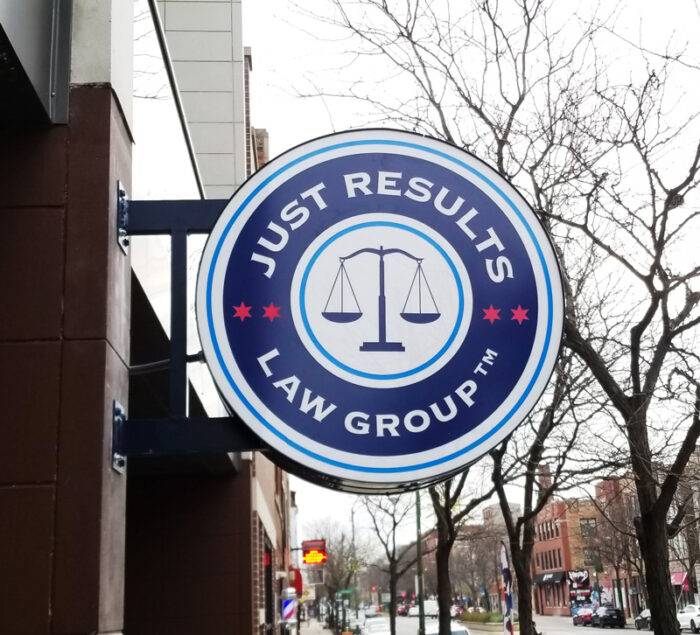
Cabinet signs, also known as box signs, are typically rectangular and can be illuminated or non-illuminated. They offer a large surface area for branding and are generally less expensive than channel letters, with prices starting around a few hundred dollars.
Here’s a breakdown of what you might expect:
Material Used:
- Aluminum Composite: Durable and often used for cabinet signs.
- Acrylic Faces: For a high-quality, glossy finish that allows for backlighting.
- Polycarbonate: A tough material that’s less prone to breakage.
Size of the Sign:
- The cost will increase with the size of the sign due to more materials and labor.
Complexity of Design
- A basic, one-color sign will cost less than a multi-colored, intricate design.
Illumination:
- Internal Illumination: Often LED, which adds to upfront cost but is energy-efficient.
- External Spotlights: May be less expensive initially, but can have higher energy costs.
Installation:
- Professional installation is recommended and cost will vary based on the complexity of the job.
Permitting
- Local regulations may require permits for installation, affecting the total cost.
Rough Cost Estimates for Cabinet Signs:
- Basic Non-Illuminated: Starting from approximately $300 to $800.
- Mid-Range Illuminated: Prices can range from $1,000 to $3,000.
- High-End Customized: For larger, custom signs with premium materials, prices can start at $3,000 and go upwards.
Additional Costs:
- Design Fees: If you need a custom design.
- Electrical Work: For illuminated signs, electrical installation can add to the cost.
- Maintenance: LED signs require less, but all signs need some level of maintenance.
- Repairs: Weather or accidental damage may incur additional costs.
Tips for Cost Savings:
- Choose Energy-Efficient LEDs: For illuminated signs, LEDs can save on energy costs.
- Opt for Durability: A more robust sign can reduce long-term repair and replacement costs.
- Pre-Designed Options: Custom designs are more expensive than pre-designed templates.
3. Awnings and Canopies
Awnings and canopies provide a dual function of signage and shelter. They are a stylish option that can enhance the architectural appeal of my storefront.
The price of these signs can vary widely depending on several factors, including:
- Materials: The cost can vary based on whether the sign is made from vinyl, fabric, metal, acrylic, or another material.
- Size: Larger signs will generally cost more than smaller ones.
- Design Complexity: Custom designs with intricate graphics or additional features like lighting will be more expensive.
- Type of Awning or Canopy: The structure on which the sign will be mounted can affect the installation process and the overall cost.
- Installation Requirements: If the installation is complex or requires special equipment, the cost may be higher.
- Local Labor Rates: Costs can differ depending on where your business is located and the prevailing local rates for skilled labor.
- Permitting: Some locales require permits for signage, which can add to the cost.
Here is a rough breakdown of potential costs:
Awnings and Canopies Storefront Sign Cost Estimates:
- Basic Vinyl Signage: $100 – $500
- Fabric Awnings with Simple Text: $500 – $2,500
- Metal or Acrylic Lettering: $200 – $1,000
- Illuminated Signs: $1,000 – $10,000
- Custom Designed Premium Signs: Prices can exceed $10,000, depending on the complexity and materials.
Additional Costs to Consider:
- Design Fees: If you hire a graphic designer to create your sign.
- Permits: Costs associated with obtaining the necessary permits.
- Maintenance: Long-term costs for cleaning and repairs to keep the sign in good condition.
4. Neon lights storefront sign
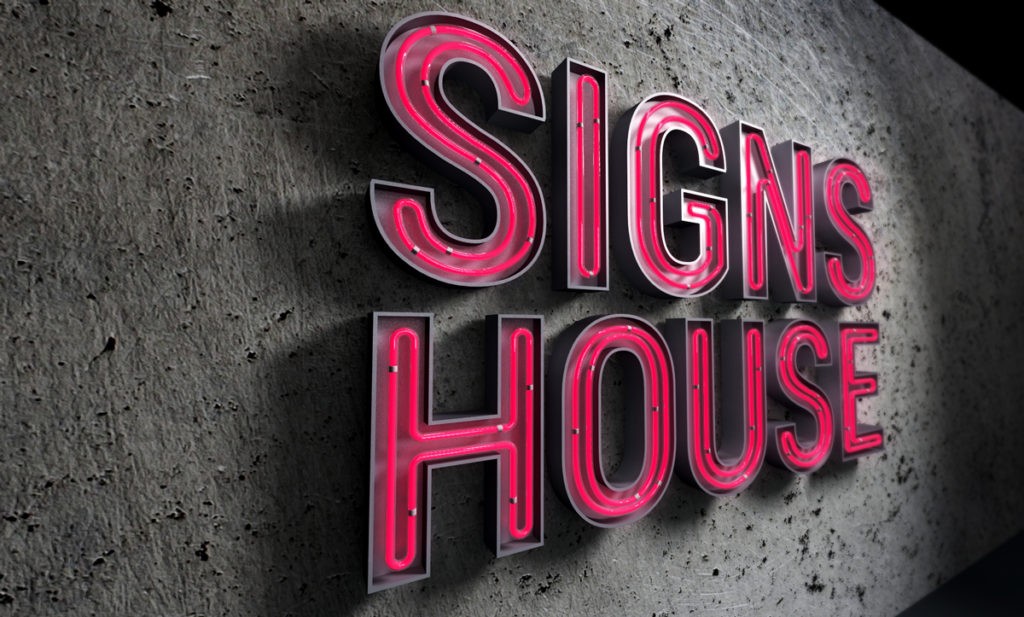
The cost of a neon lights storefront sign can vary widely depending on several factors. Here is a breakdown of the elements that might affect the overall price:
- Size of the Sign: Larger signs will cost more due to more materials and labor.
- Complexity of Design: A sign with intricate designs or custom fonts will be more expensive than standard designs.
- Number of Colors: The more colors you use, the higher the cost, as each color typically requires a separate tube of neon gas.
- Quality of Materials: The type of glass, the quality of the neon gas, and the durability of the backing material can affect cost.
- Installation: Professional installation can add to the overall cost, especially if the sign needs to be mounted at a significant height or requires special equipment.
- Maintenance: Neon signs require maintenance, and some sellers offer maintenance services at an additional cost.
Average Price Range:
- Basic Neon Signs: For simple designs, prices could start as low as $200 to $500.
- Moderate Designs: For medium complexity and size, the cost can range from $500 to $1,500.
- Custom or Large Signs: These can run upwards of $1,500 to $5,000 or more, depending on the factors listed above.
Additional Costs:
- Permits: Some localities require permits for storefront signs, which can add to the cost.
- Repairs: Neon signs are delicate, and repairs for broken tubes or transformers can be costly.
- Electricity: Don’t forget to factor in the increased electricity costs for running your neon sign, especially if it will operate for extended hours.
Tips for Cost-Effective Neon Signs:
- Get Multiple Quotes: Shop around and get quotes from different vendors to compare prices. Find the best signs service such as Signs House in Chicago.
- Simplify Design: Consider simplifying your design to reduce the cost while still maintaining effectiveness.
- Check Warranty: Ensure that you have a good warranty to cover potential early failures or issues with the sign.
- Energy-Efficient Alternatives: Look for LED neon signs, which can mimic the look of neon but are more energy-efficient and often have a longer lifespan.
5. Window Graphics
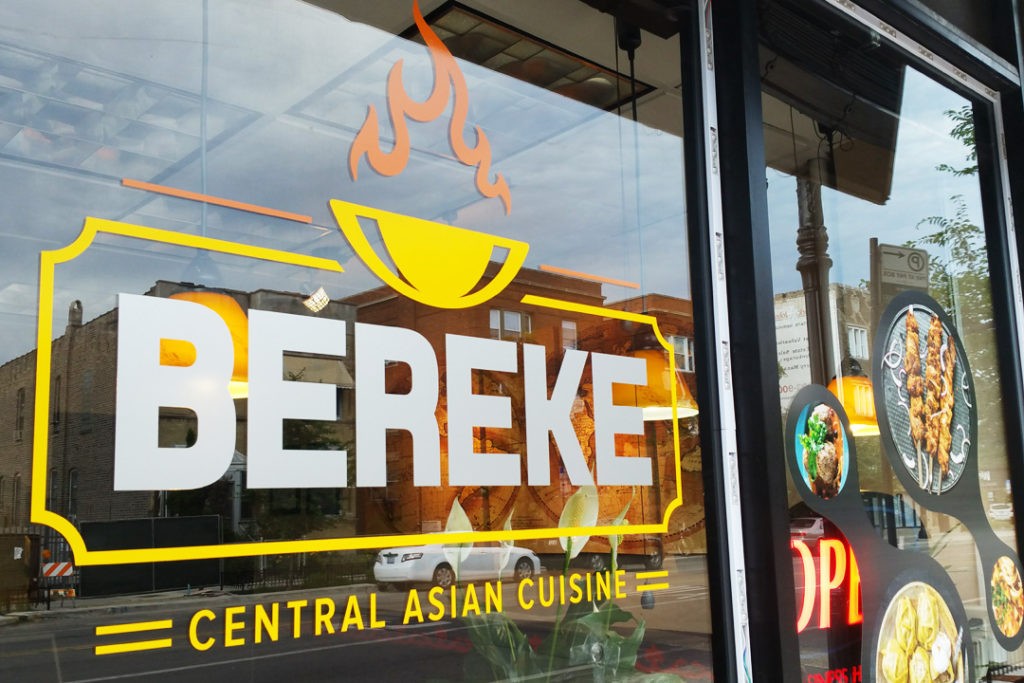
The cost of a window sign can vary on the size of the sign, the materials used, the complexity of the design, and whether you need professional installation.
Below is a general breakdown to give you an idea:
Factors Affecting Cost:
- Size of the Sign: Larger signs will cost more than smaller ones.
- Material: Vinyl decals, frosted window films, neon signs, and digital displays are common materials, each with varying costs.
- Design Complexity: A simple one-color design will be less expensive than a multi-color or intricate graphic.
- Customization: Custom shapes, colors, or graphics can add to the cost.
- Installation: Professional installation will add to the overall cost, but ensure the sign is properly placed and secure.
- Durability: Higher-quality materials that are weather-resistant and fade-resistant may cost more upfront but can save money over time.
- Quantity: Ordering multiple signs at once might reduce the unit cost due to bulk production.
Rough Cost Estimates:
- Vinyl Decals: $10 – $50+ per square foot
- Frosted or Etched Glass Films: $5 – $10+ per square foot
- Neon Signs: $200 – $1,000+ depending on size and complexity
- Digital/Electronic Displays: $1,000 – $10,000+ depending on size and technology
Steps to Take Before Purchasing:
- Measure your window space to determine the size of the sign you need.
- Decide on the purpose of your sign: Is it for branding, advertising, or decoration?
- Choose a design that reflects your business’s style and message.
- Get quotes from multiple vendors to compare prices.
- Check local regulations regarding signage to ensure compliance.
Additional Considerations:
- Longevity: Investing in a higher quality sign might be more cost-effective in the long run.
- Visibility: Consider the location and how well the sign can be seen by passersby.
- Lighting: If your sign needs to be seen at night, you may need to factor in the cost of lighting.
6. Blade Storefront Signs
If you are looking for cost-effective ideas for blade storefront signs, here are several suggestions that can help you manage the budget while still achieving a quality sign for your storefront:
Factors Affecting Cost:
- Size: Larger signs will typically cost more due to more materials and labor.
- Material: Metal signs, such as aluminum or stainless steel, might be more expensive than acrylic or PVC signs.
- Complexity: If the sign requires intricate designs, logos, or custom shapes, it may increase the cost.
- Illumination: LED or neon lighting can add to the cost due to additional materials and energy requirements.
- Installation: The cost of professional installation can vary and may depend on the complexity of the installation process.
- Quantity: Ordering multiple signs may reduce the cost per unit due to bulk manufacturing.
Estimated Price Ranges:
- Basic Non-illuminated Signs: $100 – $500
- These are often made from simple materials and have minimal design complexity.
- Mid-Range Signs: $500 – $1,500
- These may include some custom design elements or higher-quality materials.
- High-End Illuminated Signs: $1,500 – $3,000+
- These signs typically include LED or neon illumination, custom designs, and premium materials.
Additional Costs:
- Design Fees: If you need a custom design, there might be additional fees for graphic design services.
- Permits: Some locales require permits for installing storefront signs, which can add to the cost.
- Maintenance: If you choose an illuminated sign, consider the long-term costs of electricity and maintenance.
Example Cost-Effective Blade Sign Options:
- Basic Flat Blade Sign: A simple, flat metal or plastic sign with vinyl lettering.
- Painted Wood Signs: A painted wooden sign can be cost-effective, especially if you can do the painting yourself.
- Acrylic Signs with Vinyl Lettering: Acrylic is a versatile material that, when paired with vinyl lettering, can offer a professional look at a lower cost.
Getting an Accurate Quote:
- Contact local sign makers for precise quotes.
- Provide them with details such as the desired size, material, whether you want the sign illuminated, and any specific design ideas you have.
- Ask for a detailed breakdown of costs, including design, manufacturing, installation, and any additional fees.
7. 3D Lettering and Logos
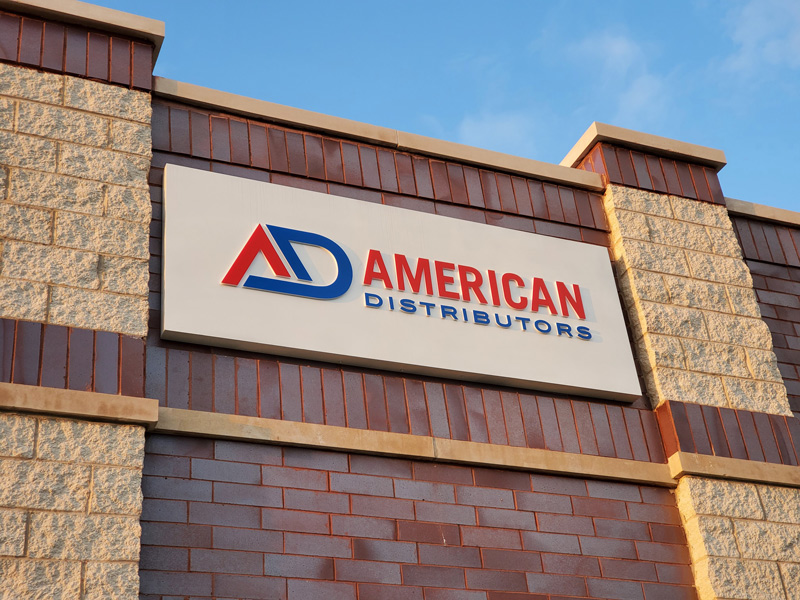
When considering the cost of 3D storefront signs, several factors will affect the price. Here is a breakdown of elements to consider, which will influence the overall cost:
Factors Influencing Cost:
- Materials Used: The choice of materials (e.g., acrylic, metal, wood, foam, etc.) plays a significant role in pricing. Metal signs are typically more expensive than acrylic or foam options.
- Size of the Sign: Larger signs require more materials and labor, which increases the cost.
- Complexity of Design: The more intricate the design, the higher the cost due to the time and labor involved in production.
- Illumination: Adding lighting elements, such as LED or neon, will increase the cost significantly.
- Installation: Professional installation can vary depending on the location, height, and complexity of the sign.
- Permitting: Some localities require permits for storefront signs, which can add to the overall cost.
Rough Cost Estimates:
Here are some rough ideas for costs associated with 3D storefront signs:
- Basic 3D Lettering: Starting from a few hundred dollars and can go up based on material and size.
- Mid-Range Illuminated Signs: These can range from $1,000 to $10,000, influenced by the factors mentioned above.
- High-End Custom Signs: For signs with complex designs and high-end materials, costs can exceed $10,000.
Tips for Cost Savings:
- Simplify the Design: Less complex designs reduce production costs.
- Consider the Material: Opt for cost-effective materials that still meet your needs.
- Size Appropriately: Only as large as necessary to be seen and effective.
- Do Parts Yourself: If capable, self-installation or partial self-assembly can save money.
- Shop Around: Get multiple quotes from different sign makers to ensure competitive pricing.
8. Digital Storefront Signs
When considering the installation of a digital storefront sign, there are several cost factors to take into account. Below are some considerations that can impact the overall investment.
Initial Purchase and Installation Costs:
- Type of Display: The cost can vary significantly depending on whether you choose LED, LCD, or another type of digital display.
- Resolution: Higher resolution signs tend to be more expensive.
- Size: Larger signs will cost more due to the increased materials and technology required.
- Complexity of Design: Custom shapes and designs can increase the cost.
- Outdoor vs. Indoor: Outdoor signs usually need to be more durable and weather-resistant, which can increase costs.
- Installation: Professional installation can add to the cost, especially if structural modifications are needed.
Operational Costs:
- Electricity Usage: Digital signs require power to operate, so the cost of electricity will be a recurring expense.
- Maintenance: Regular maintenance is required to keep the sign functioning properly.
- Software Updates: Depending on the system, there may be costs associated with software updates or subscriptions.
Content Creation and Management:
- Content Creation: Costs can be incurred if professional services are used to create high-quality digital content.
- Content Management System (CMS): Some digital signs require a CMS to schedule and manage content, which might have an associated cost.
Potential Additional Costs:
- Permits and Regulations: There may be local regulations that require permits or impose restrictions on signage, potentially adding to the cost.
- Insurance: Additional insurance may be needed to cover the digital sign.
- Connectivity: If the sign requires an internet connection, there may be ongoing costs for data or Wi-Fi service.
A Rough Estimate:
Here is a rough estimate considering the above factors:
- Basic Digital Signage: $1,000 to $10,000 for small to medium-sized indoor displays.
- Advanced Digital Signage: $10,000 to $50,000 for high-resolution, large, or outdoor-rated displays.
- Custom and High-End Installations: Can exceed $50,000 depending on the level of customization and technology.
9. Banner storefront Signs
When considering storefront banner signs, it’s important to understand that the cost can vary widely based on a number of factors. Below are some ideas and factors that will influence the price of your storefront banner signs.
Factors Influencing Cost:
- Material: The type of material (vinyl, fabric, mesh, etc.) will affect the price.
- Size: Larger banners will cost more than smaller ones due to the amount of material and ink used.
- Color and Design Complexity: Full-color designs are typically more expensive than one or two-color banners.
- Durability: Weather-resistant and higher-quality materials will cost more but last longer.
- Customization: Custom shapes or cut-outs can add to the cost.
- Quantity: Ordering in bulk can sometimes reduce the cost per banner.
- Installation: The cost of professional installation will add to the total price.
Cost-Saving Ideas:
- Standard Sizes: Stick to standard sizes to avoid custom cutting fees.
- Simpler Designs: Use fewer colors and less complex graphics to save on printing costs.
- Material: Choose a material that is cost-effective yet suitable for your needs.
- DIY Installation: If you’re handy, consider installing the banner yourself to save on professional fees.
- Promotions: Look out for deals and promotions from printing companies.
- Compare Quotes: Get quotes from multiple vendors to ensure you’re getting the best price.
Rough Cost Estimates:
- Small Banner (2’x4’): Starting around $20 – $50.
- Medium Banner (3’x6’): Starting around $40 – $100.
- Large Banner (4’x8’ or larger): Starting around $100 – $200+.
Please note that these prices are rough estimates and can vary based on the factors mentioned above.
10. LED Message Centers
When considering the installation of an LED message center sign, there are various factors that can influence the cost. Below are some of the main components you should take into account:
Size and Resolution:
- The size of the sign is a significant factor. Larger signs will cost more due to the increase in materials and the complexity of the installation.
- Resolution, or pixel pitch, also affects the price. A higher resolution (smaller pixel pitch) means more LEDs are used per square inch, increasing the cost.
Type of LED:
- Monochrome LED signs are typically less expensive than full-color options.
- Full-color LED signs offer a greater range of colors and are more appealing for businesses that want to display complex images or animations.
Quality of Components:
- Higher quality LEDs can have a longer lifespan and better brightness, but they will increase the cost.
- The quality of the sign cabinet, power supplies, and other components will also affect the price.
Software and Content:
- Some LED message centers come with proprietary software for creating and scheduling messages. The quality and capabilities of this software can impact the price.
- If you need custom content creation, this will be an additional cost.
Installation:
- Professional installation costs can vary widely depending on the location, mount type (wall, pole, monument), and complexity.
- Structural modifications or electrical upgrades needed for installation will add to the total cost.
Maintenance and Operation:
- Energy efficiency can impact the long-term operating costs. LED signs are generally energy-efficient, but there can be differences depending on the model and size.
- Consider the cost of maintenance, including cleaning and potential repairs over the lifetime of the sign.
Permits and Regulations:
- Local permits and regulations may require fees and should be factored into the cost.
- Ensure that your sign complies with local zoning laws, which can also dictate the maximum size or brightness of your sign.
Estimates:
Here are some rough estimates for different types of LED message center signs:
- Monochrome LED signs: Starting around $1,000 to $10,000.
- Full-color LED signs: Starting around $10,000 to $30,000 or more, depending on size and resolution.
- Installation: Can range from $500 to several thousand dollars, not including potential structural modifications.
Additional Costs to Consider When Getting a Storefront Sign
When budgeting for a storefront sign, it’s important to consider additional costs that aren’t always immediately apparent.
Permits and Regulations:
Many cities and towns require permits for storefront signs, and the cost and process can vary depending on local regulations. Failure to comply with these regulations can result in fines, so it’s important to factor this into the overall cost.
Maintenance and Repairs:
The cost of maintaining and repairing a sign over its lifetime can add up. Choosing a sign made from high-quality materials might have a higher initial cost but can save money in the long run by reducing the need for frequent repairs.
Electrical Work for Illuminated Signs:
Illuminated signs require electrical work, which can be a significant additional cost. This includes not only the initial installation but also the ongoing electricity costs to keep the sign lit.
Is It Worth Investing in a High-Quality Storefront Sign?
While considering how much storefront signs cost, I also need to contemplate the return on investment. A high-quality sign can be a significant expense, but it’s often justified by the benefits it brings.
Attracting More Customers:
A visually appealing and professionally made sign can attract more customers, which can lead to increased sales and revenue. The sign acts as a silent salesperson, drawing people into the store.
Longevity and Durability:
Investing in a high-quality sign made from durable materials can save money in the long run, as it will likely require fewer repairs and replacements.
Enhancing Brand Image:
A high-quality sign can enhance my brand’s image, signaling to customers that we care about our presentation and, by extension, the products or services we offer.
Factors That Affect the Cost of a Storefront Sign
When I first looked into how much a storefront sign costs, I quickly realized that several factors influence the price. It’s not just about the sign itself; it’s about the customization, materials, size, complexity, and installation.
Sign Materials and Durability
The materials used for the sign can have a significant impact on the cost. Durable materials like metal or high-density urethane are more expensive but can withstand the elements better and last longer. Less expensive materials like vinyl or acrylic might be more cost-effective upfront but may not endure as long.
Complexity of Design
The complexity of the sign’s design also plays a role in the cost. A sign with intricate designs, multiple colors, or elaborate lighting will require more time and resources to create, which will be reflected in the price.
Size and Installation Requirements
The size of the sign and the installation requirements are also major factors. Larger signs or those that require specialized installation equipment or permits can drive up the cost significantly.
The Importance of a Storefront Sign for Businesses
A storefront sign is much more than just a label for my business; it’s a powerful marketing tool. The right sign can convey my brand’s message, highlight our professionalism, and attract more customers. It’s often the case that a well-designed and strategically placed sign can increase brand exposure and even boost sales.
Making a First Impression
The storefront sign is typically the first interaction potential customers have with my brand. It has to make a strong first impression that not only captures attention but also communicates the essence of my brand. A sign that reflects my business’s personality and values can create a lasting impression, encouraging customers to step through the door.
Branding and Visibility
Branding is all about storytelling, and a storefront sign tells a story in a glance. A distinctive, clear, and visually appealing sign can enhance brand recognition and make my business stand out in a crowded marketplace. Visibility, especially in high-traffic areas, is crucial for drawing in walk-in customers.
Encouraging Impulse Stops
Many customers make impulse decisions to enter a store based on the storefront sign. An attractive sign can be the tipping point that encourages someone to stop and check out what’s inside. It’s an investment that continues to pay dividends by consistently attracting new customers.
Tips for Finding the Best Deal on a Storefront Sign
Finding the best deal on a storefront sign requires research and negotiation. Here are some tips that have helped me get the most value for my money.
Get Multiple Quotes:
I always get quotes from several sign companies to compare prices and services. This not only gives me an idea of the going rate but also allows me to negotiate better deals.
Consider the Total Cost of Ownership:
When comparing prices, I consider the total cost of ownership, including maintenance, repairs, and energy consumption for illuminated signs. This provides a more accurate picture of the sign’s true cost.
Look for Package Deals:
Some sign companies offer package deals that include design, manufacturing, and installation. These packages can sometimes be more cost-effective than paying for each service separately.
The Average Cost of a Storefront Sign in Different Cities
The cost of storefront signs can vary widely depending on the city due to differences in labor costs, materials availability, and local regulations.
Major Metropolitan Areas:
In major metropolitan areas like New York or Los Angeles, the cost of storefront signs tends to be higher due to the higher cost of living and doing business. Prices can range from a few thousand dollars to tens of thousands for large, complex signs.
Smaller Cities and Towns:
In smaller cities and towns, the cost of storefront signs can be more affordable. However, there may be fewer sign companies to choose from, which can affect pricing and availability.
Regional Variations:
Regional variations in materials and labor can also impact the cost of a storefront sign. It’s important to get local quotes to understand the market rates in my area.
DIY vs. Professional Installation: Which Is More Cost-Effective?
When it comes to installing a storefront sign, I have to decide between a do-it-yourself approach or hiring a professional. Each option has its own set of costs and benefits.
DIY Installation:
DIY installation can save money on labor costs, but it comes with risks. If I’m not experienced in sign installation, I could end up causing damage or creating a safety hazard. Additionally, I might not have access to the necessary tools and equipment.
Professional Installation:
Hiring a professional ensures that the sign is installed correctly and safely. Although it’s an additional cost, it can prevent expensive mistakes and provide peace of mind. If you need a professional installation service, then Signs House is the best option for you.
Evaluating the True Cost:
To evaluate which option is more cost-effective, I consider the complexity of the installation, the value of my time, and the potential risks involved in a DIY installation.
Conclusion
Finding the right balance between cost and quality for a storefront sign is key to maximizing its effectiveness as a marketing tool for my business. While how much a storefront sign costs is an important consideration, it’s just as crucial to invest in a sign that reflects my brand’s values and appeals to customers.
By understanding the factors that influence the cost, exploring different types of signs, and budgeting accordingly, I can make an informed decision that supports my business goals.
Remember, a storefront sign is not just an expense; it’s an investment in my business’s future. With careful planning and consideration, we can find a sign that meets both our aesthetic and financial needs.
If you’re ready to make that investment and are looking for guidance or services to create the perfect storefront sign for your business, don’t hesitate to reach out to local sign companies or design experts who can help bring your vision to life.

